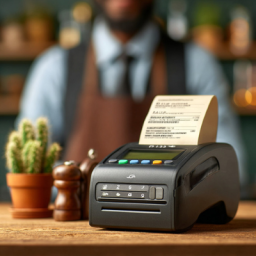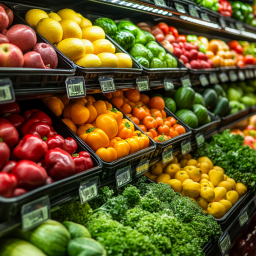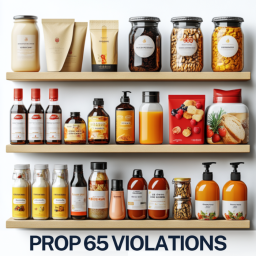
Across the United States, food and beverage manufacturers have long relied on federal standards—particularly those from the FDA—to guide ingredient disclosures and labeling practices. However, that paradigm is beginning to shift. In a bold move signaling a new era of state-specific food regulations, Texas and Louisiana have passed laws that impose unique labeling and disclosure requirements on a wide range of food ingredients. These laws don’t just tweak federal rules—they introduce entirely new obligations, including on-pack warning labels and QR code-based digital disclosures, for foods sold within state borders.
This growing trend reflects an intensifying state-level focus on health and consumer transparency, with certain legislators positioning their states as laboratories for policy reform. What makes these laws particularly complex is the overlap—and divergence—between the two states’ ingredient lists, effective dates, and disclosure formats. For companies in the food industry, especially those distributing products nationwide, this shift demands both strategic foresight and operational flexibility. Brands that delay planning may soon find themselves entangled in legal risk, inconsistent compliance, or reputational fallout.
What’s Changing—and Why It Matters
Texas and Louisiana have enacted landmark state laws requiring new ingredient disclosures on food products, signaling a shift away from federal labeling uniformity. Texas mandates on-pack warning labels for foods containing certain additives—like artificial colors and preservatives—citing concerns raised by foreign regulators. Louisiana requires QR codes on packaging that link to ingredient disclosures and FDA resources. It also adds obligations for restaurants using seed oils and bans specific ingredients in school meals, expanding the law’s reach beyond packaged goods.
Though enforcement begins in 2027 (Texas) and 2028 (Louisiana), businesses should act now. These laws impact manufacturers, co-packers, and retailers differently, and introduce serious compliance challenges. With longer lead times for packaging and regulatory updates, companies face growing pressure to adapt. The laws also raise constitutional and federal preemption questions, leaving open the possibility of litigation—yet offering little relief for brands that wait too long to prepare.
Which Ingredients Are Targeted?
The substances at issue include common ingredients used by major brands—from titanium dioxide and Red 40, to artificial sweeteners like aspartame and sucralose. Some ingredients appear on both state lists; others are state-specific. This raises the possibility that a product compliant in one state could be noncompliant in another unless companies adapt labeling and digital content accordingly.
Key categories affected include:
- Artificial colors (Red 3, Yellow 6, Blue 1, Green 3)
- Preservatives (BHA, BHT, propylparaben)
- Sweeteners and oils (aspartame, seed oils, interesterified fats)
- Processing aids (azodicarbonamide, bleached flour, emulsifiers)
How Will These Laws Impact Food Businesses?
1. Compliance complexity will increase.
A uniform national label may no longer suffice. Products sold in Texas or Louisiana may require packaging changes or supplemental disclosures.
2. Legal risk is real.
Both laws raise concerns under the First Amendment (compelled speech) and federal preemption, especially if disclosures imply safety concerns that conflict with FDA determinations. Companies may face litigation if they fail to comply—or even if they do comply but dispute the law’s constitutionality.
3. Digital teams must prepare.
For Louisiana, manufacturers must maintain updated landing pages with ingredient statements and links to FDA information. This blends food law with digital regulatory compliance.
4. Restaurants and foodservice are now stakeholders.
In Louisiana, restaurants using seed oils must post notices on their menus. This is a new compliance requirement for the hospitality sector.
Why This Matters to Business Owners
This trend reflects broader momentum toward “clean label” policies at the state level, echoing political messaging about “ultra-processed” foods and public health. As more states follow suit, a patchwork of local rules could replace the historically centralized federal system.
Food and beverage businesses—especially emerging brands and co-manufacturers—should begin preparing for:
- Multi-tiered compliance programs
- Ingredient reformulation reviews
- Dual-language packaging with customizable panels
- State-specific retailer agreements
- Litigation strategy discussions with counsel
How Can Companies Respond Strategically?
Juris Law Group, P.C. recommends the following steps:
- Audit all SKUs sold in Texas and Louisiana for compliance risks.
- Update your digital infrastructure to support QR-code-linked webpages.
- Consult legal counsel on speech-based challenges and preemption defenses.
- Track state-level legislative activity—California, Virginia, and West Virginia are introducing similar initiatives.
- Reformulate or relabel proactively if your ingredients appear on watchlists.
Frequently Asked Questions (FAQ)
1. Do these state laws override FDA guidelines?
No. The FDA remains the primary federal authority on food labeling and safety. However, states like Texas and Louisiana are using their own authority to require additional disclosures. These requirements are not preempted unless a court determines that the state law directly conflicts with federal law or violates the Constitution.
2. Are all products with these ingredients required to carry a warning or QR code?
Not necessarily. The requirements apply based on where the product is sold and whether it contains one of the listed ingredients. Each state has a slightly different list, and certain product categories—like dietary supplements, drugs, or USDA-regulated meats—may be exempt.
3. Who is responsible for compliance: manufacturers or retailers?
Primarily, the burden falls on manufacturers, especially in Texas. They are expected to ensure the appropriate warning appears on packaging. For online retailers, manufacturers must also supply the necessary language so that the warning can be posted digitally.
4. What is the penalty for non-compliance?
Penalties have not yet been specified in detail, but non-compliant companies could face civil liability, state enforcement actions, and even consumer litigation. There is also reputational risk associated with failing to provide required disclosures.
5. Should brands begin preparing now?
Yes. Although the laws do not take effect until 2027 and 2028, reformulating products, changing labels, and building QR-linked websites require long lead times. Early compliance planning will mitigate both legal and operational risks.
Final Thoughts
The recent laws out of Texas and Louisiana are more than isolated state policies—they are a bellwether for broader trends reshaping the regulatory landscape in the food and beverage industry. These new rules are not simply about consumer warnings or QR codes; they signal a deeper shift toward state-led oversight and a reevaluation of ingredients that have, until now, been federally permitted without localized disclaimers. For national brands, this creates a pressing need to reevaluate their compliance infrastructure, labeling strategies, and digital readiness.
Forward-thinking companies will view these developments not only as compliance challenges but also as strategic opportunities. Brands that align with evolving transparency standards can build stronger consumer trust, differentiate themselves in a crowded market, and minimize litigation risk. With more states expected to follow Texas and Louisiana’s lead, now is the time for legal teams, marketing departments, and executive leadership to collaborate on a proactive roadmap. Juris Law Group, P.C. remains available to guide clients through this complex and fast-changing regulatory environment.













